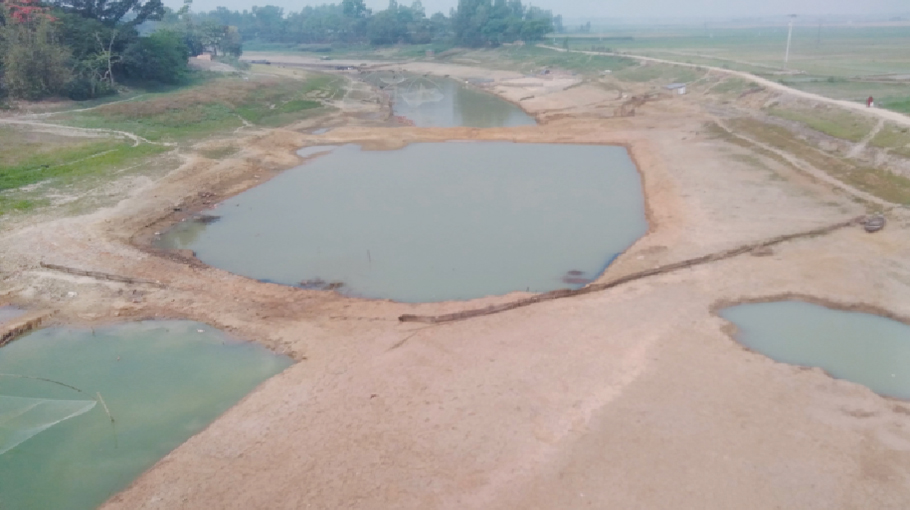Chalan Beel drying up
Water way link in several dists stops

All the rivers, beels and canals of Chalan Beel are drying up gradually in Pabna, Natore and Sirajganj districts, affecting ecology, agriculture, fisheries and waterway communications in those areas.
As there is no water in the rivers and canals of Chalan Beel, waterway communications in the region have remained suspended for several months.
The Chalan Beel region is comprised of Chatmohar, Bhangura and Faridpur upazilas of Pabna district, Gurudaspur, Boraigram and Singra upazilas of Natore district, and Tarash, Raiganj and Ullapara upazilas of Sirajganj district. As most of the rivers running through the Chalan Beel areas have been silted up and have not been excavated for a long time, the crisis of navigability is increasing. The Atrai and Gumani rivers were excavated in an unplanned way. As a result, people living beside those rivers are being deprived of getting any benefit of the excavation. Locals said the rivers, beels and canals of the water body are drying up before the winter every year. As a result, waterway communications and irrigation in croplands are being affected and the varieties of local fish species are on the verge of extinction. According to the book 'Chalanbeeler Etikotha' written by Principal Md. Abdul Hamid, the rivers Atrai and Gur originating from Jalpaiguri came to Rajshahi and they later turned into a number of branches. The mixed flow of the rivers named as Gumani falls into the Boral river.
The Boral river originated from the river Padma near Charghat. After flowing a short distance, the river meets Gumani river and it again joins Hurasagar river traversing through Bhangura, Faridpur and Baghabari. Once upon a time, the Boral had strong currents. But, the river was later leased for pisciculture. The lease-holders erected cross dams in many places of the river and cultivated fishes there. Following movement of Boral Rakkha Committee, three cross dams of the river at Natun Bazar, Botharghat and Ramnagar were removed. But due to illegal occupation of land of the river, the river is dying.
The Chechua river originating from Dharabarisha of Natore meets the Gumani river near Chatmohar. There is no existence of the river now.
Chiknai river which meets Boral river is almost not existent now. More than 200 canals and 10 to 12 rivers passing through the Chalan Beel are now without water.
Mokhlesur Rahman Biddut, President of Chatmohar Traders Association, said the present condition of Chalan Beel is affecting the trade and commerce of the region. Once upon a time, traders of the region used to carry their goods to and from the beel villages and the towns by boats. Goods are now being carried through roads, which is costly.
Jahangir Alam, convener of Chalan Beel Rakkhay Amra organisation, said farmers cannot travel or carry their goods by boats due to closure of the river routes. Thousands of people who were dependent on the water body in the past are now forced to change their professions. As groundwater level in the Beel drops, farmers are failing to draw water from underground water reservoirs through shallow tubewells.
Dr SM Mukti Mahmud, Head of the Department of Chatmohar Government College, said due to accumulation of sand, soil and pebbles on the beds of the rivers in Chalan Beel region, the capacity of containing water of the rivers is falling. As a result, the rivers are drying up during the dry season which is affecting the livelihood of people, crop production, fish and even birds.
SM Mijanur Rahman, member secretary of Boral River Rakkha Committee, said rivers, canals and water bodies are the lifelines of the Chalan Beel. The Chalanbeel will lose its characteristics if the rivers, canals and water bodies of the beels cannot be saved. He demanded that the authority stop leasing any river of Bangladesh, including the rivers of the Chalan Beel.




